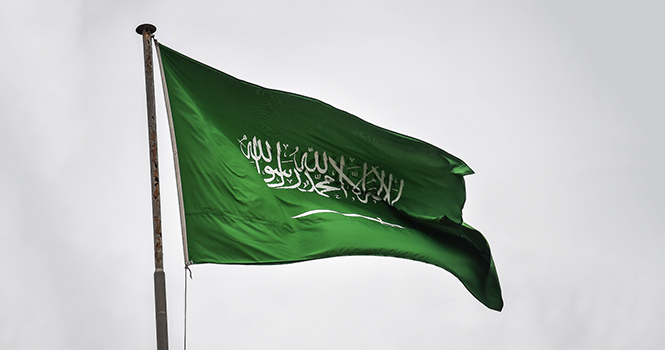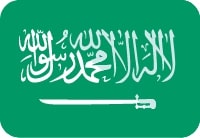
Search Result
- TASI
-
Energy
- 2222 - SAUDI ARAMCO
- 2030 - SARCO
- 2380 - PETRO RABIGH
- 4030 - BAHRI
- 2381 - ARABIAN DRILLING
- 2382 - ADES
- 1201 - TAKWEEN
- 1202 - MEPCO
- 1210 - BCI
- 1211 - MAADEN
- 1301 - ASLAK
- 1304 - ALYAMAMAH STEEL
- 1320 - SSP
- 2001 - CHEMANOL
- 2010 - SABIC
- 2020 - SABIC AGRI-NUTRIENTS
- 2090 - NGC
- 2150 - ZOUJAJ
- 2170 - ALUJAIN
- 2180 - FIPCO
- 2200 - APC
- 2210 - NAMA CHEMICALS
- 2220 - MAADANIYAH
- 2240 - SENAAT
- 2250 - SIIG
- 2290 - YANSAB
- 2300 - SPM
- 2310 - SIPCHEM
- 2330 - ADVANCED
- 2350 - SAUDI KAYAN
- 3002 - NAJRAN CEMENT
- 3003 - CITY CEMENT
- 3004 - NORTHERN CEMENT
- 3005 - UACC
- 3010 - ACC
- 3020 - YC
- 3030 - SAUDI CEMENT
- 3040 - QACCO
- 3050 - SPCC
- 3060 - YCC
- 3080 - EPCCO
- 3090 - TCC
- 3091 - JOUF CEMENT
- 3092 - RIYADH CEMENT
- 2060 - TASNEE
- 3008 - ALKATHIRI
- 3007 - OASIS
- 1321 - EAST PIPES
- 1322 - AMAK
- 2223 - LUBEREF
- 2360 - SVCP
- 1323 - UCIC
- 4143 - TALCO
- 1212 - ASTRA INDUSTRIAL
- 1302 - BAWAN
- 4146 - GAS
- 1303 - EIC
- 4145 - OBEIKAN GLASS
- 2040 - SAUDI CERAMICS
- 2110 - SAUDI CABLE
- 4144 - RAOOM
- 2160 - AMIANTIT
- 2320 - ALBABTAIN
- 2370 - MESC
- 4140 - SIECO
- 4141 - ALOMRAN
- 4142 - RIYADH CABLES
- 1214 - SHAKER
- 4110 - BATIC
- 4031 - SGS
- 4040 - SAPTCO
- 4260 - BUDGET SAUDI
- 2190 - SISCO HOLDING
- 4261 - THEEB
- 4263 - SAL
- 4262 - LUMI
- 4264 - FLYNAS
- 1810 - SEERA
- 6013 - DWF
- 1820 - BAAN
- 4170 - TECO
- 4290 - ALKHALEEJ TRNG
- 6017 - JAHEZ
- 6002 - HERFY FOODS
- 1830 - LEEJAM SPORTS
- 6012 - RAYDAN
- 4291 - NCLE
- 4292 - ATAA
- 6014 - ALAMAR
- 6015 - AMERICANA
- 6016 - BURGERIZZR
- 6018 - SPORT CLUBS
- 4003 - EXTRA
- 4008 - SACO
- 4050 - SASCO
- 4190 - JARIR
- 4240 - CENOMI RETAIL
- 4191 - ABO MOATI
- 4051 - BAAZEEM
- 4192 - ALSAIF GALLERY
- 4193 - NICE ONE
- 4194 - BUILD STATION
- 4200 - ALDREES
- 4001 - A.OTHAIM MARKET
- 4006 - FARM SUPERSTORES
- 4061 - ANAAM HOLDING
- 4160 - THIMAR
- 4161 - BINDAWOOD
- 4162 - ALMUNAJEM
- 4164 - NAHDI
- 4163 - ALDAWAA
- 2050 - SAVOLA GROUP
- 2100 - WAFRAH
- 2270 - SADAFCO
- 2280 - ALMARAI
- 6001 - HB
- 6010 - NADEC
- 6020 - GACO
- 6040 - TADCO
- 6050 - SFICO
- 6060 - SHARQIYAH DEV
- 6070 - ALJOUF
- 6090 - JAZADCO
- 2281 - TANMIAH
- 2282 - NAQI
- 2283 - FIRST MILLS
- 4080 - SINAD HOLDING
- 2284 - MODERN MILLS
- 2285 - ARABIAN MILLS
- 2286 - FOURTH MILLING
- 2287 - ENTAJ
- 4002 - MOUWASAT
- 4021 - CMCER
- 4004 - DALLAH HEALTH
- 4005 - CARE
- 4007 - ALHAMMADI
- 4009 - SAUDI GERMAN HEALTH
- 2230 - CHEMICAL
- 4013 - SULAIMAN ALHABIB
- 2140 - AYYAN
- 4014 - EQUIPMENT HOUSE
- 4017 - FAKEEH CARE
- 4018 - ALMOOSA
- 4019 - SMC HEALTHCARE
- 1010 - RIBL
- 1020 - BJAZ
- 1030 - SAIB
- 1050 - BSF
- 1060 - SAB
- 1080 - ANB
- 1120 - ALRAJHI
- 1140 - ALBILAD
- 1150 - ALINMA
- 1180 - SNB
- 2120 - SAIC
- 4280 - KINGDOM
- 4130 - SAUDI DARB
- 4081 - NAYIFAT
- 1111 - TADAWUL GROUP
- 4082 - MRNA
- 1182 - AMLAK
- 1183 - SHL
- 4083 - TASHEEL
- 4084 - DERAYAH
- 8010 - TAWUNIYA
- 8012 - JAZIRA TAKAFUL
- 8020 - MALATH INSURANCE
- 8030 - MEDGULF
- 8040 - MUTAKAMELA
- 8050 - SALAMA
- 8060 - WALAA
- 8070 - ARABIAN SHIELD
- 8190 - UCA
- 8230 - ALRAJHI TAKAFUL
- 8280 - LIVA
- 8150 - ACIG
- 8210 - BUPA ARABIA
- 8180 - ALSAGR INSURANCE
- 8170 - ALETIHAD
- 8100 - SAICO
- 8120 - GULF UNION ALAHLIA
- 8200 - SAUDI RE
- 8160 - AICC
- 8250 - GIG
- 8240 - CHUBB
- 8260 - GULF GENERAL
- 8300 - WATANIYA
- 8310 - AMANA INSURANCE
- 8311 - ENAYA
- 8313 - RASAN
- 4330 - RIYAD REIT
- 4331 - ALJAZIRA REIT
- 4332 - JADWA REIT ALHARAMAIN
- 4333 - TALEEM REIT
- 4334 - AL MAATHER REIT
- 4335 - MUSHARAKA REIT
- 4336 - MULKIA REIT
- 4338 - ALAHLI REIT 1
- 4337 - SICO SAUDI REIT
- 4342 - JADWA REIT SAUDI
- 4340 - Al RAJHI REIT
- 4339 - DERAYAH REIT
- 4344 - SEDCO CAPITAL REIT
- 4347 - BONYAN REIT
- 4345 - ALINMA RETAIL REIT
- 4346 - MEFIC REIT
- 4348 - ALKHABEER REIT
- 4349 - ALINMA HOSPITALITY REIT
- 4350 - ALISTITHMAR REIT
- 4020 - ALAKARIA
- 4324 - BANAN
- 4323 - SUMOU
- 4090 - TAIBA
- 4100 - MCDC
- 4150 - ARDCO
- 4220 - EMAAR EC
- 4230 - RED SEA
- 4250 - JABAL OMAR
- 4300 - DAR ALARKAN
- 4310 - KEC
- 4320 - ALANDALUS
- 4321 - CENOMI CENTERS
- 4322 - RETAL
- 4326 - ALMAJDIAH
- 4325 - MASAR
- NOMU
-
Media and Entertainment
Consumer Durables & Apparel
Real Estate Mgmt & Dev't
- 9521 - INMAR
- 9535 - LADUN
- 9591 - VIEW
- 9610 - FIRST AVENUE
- 9634 - ADEER
- 9640 - ASAS MAKEEN
- 9648 - HAMAD BIN SAEDAN REAL ESTATE
- 9641 - HAWYIA
- 9515 - FESH FASH
- 9532 - ALJOUF WATER
- 9536 - FADECO
- 9556 - NOFOTH
- 9559 - BALADY
- 9564 - HORIZON FOOD
- 9555 - LEEN ALKHAIR
- 9612 - SAMA WATER
- 9622 - SMC
- 9644 - NAF
- 9530 - TIBBIYAH
- 9527 - AME
- 9544 - FUTURE CARE
- 9546 - NABA ALSAHA
- 9574 - PRO MEDEX
- 9594 - ALMODAWAT
- 9572 - ALRAZI
- 9587 - LANA
- 9600 - QOMEL
- 9604 - MIRAL
- 9626 - SMILE CARE
- 9616 - JANA
- 9627 - TMC
- 9620 - BALSM MEDICAL
- 9647 - WAJD LIFE
- 9513 - WATANI STEEL
- 9514 - ALNAQOOL
- 9523 - GROUP FIVE
- 9539 - AQASEEM
- 9548 - APICO
- 9553 - MOLAN
- 9565 - MEYAR
- 9552 - SAUDI TOP
- 9563 - BENA
- 9566 - LIME INDUSTRIES
- 9580 - ALRASHID INDUSTRIAL
- 9576 - PAPER HOME
- 9588 - RIYADH STEEL
- 9575 - MARBLE DESIGN
- 9599 - TAQAT
- 9601 - ALRASHEED
- 9605 - NEFT ALSHARQ
- 9607 - ASG
- 9609 - NAAS PETROL
- 9623 - ALBATTAL FACTORY
- 9631 - HKC
- 9510 - NBM
- 9533 - SPC
- 9525 - ALWASAIL INDUSTRIAL
- 9542 - KEIR
- 9547 - RAWASI
- 9568 - MAYAR
- 9569 - ALMUNEEF
- 9578 - ATLAS ELEVATORS
- 9560 - WAJA
- 9611 - UFG
- 9624 - ALSHEHILI METAL
- 9633 - SERVICE EQUIPMENT
- 9639 - ANMAT
- 9583 - UNITED MINING
- 9608 - ALASHGHAL ALMOYSRA
- 9540 - TADWEEER
- 9545 - ALDAWLIAH
- 9570 - TAM DEVELOPMENT
- 9593 - PAN GULF
- 9597 - LEAF
- 9606 - THARWAH
- 9613 - SHALFA
- 9619 - MULTI BUSINESS
- 9621 - DRC
- 9625 - ITMAM
- 9645 - SIGN WORLD
- 9541 - ACADEMY OF LEARNING
- 9562 - FOOD GATE
- 9590 - ARMAH
- 9598 - ALMOHAFAZA FOR EDUCATION
- 9603 - HORIZON EDUCATIONAL
- 9567 - GHIDA ALSULTAN
- 9617 - ARABICA STAR
- 9630 - RATIO
- 9628 - LAMASAT
- 9632 - FUTURE VISION
- 9636 - AlKUZAMA
- 9581 - CLEAN LIFE
Sign In
×Forgot password?
×-
Bank Ranking Banks Ratios Cement Statistics Cement Ranking Cement Ratios Monetary and Economic Statistics Oil, Gas and Fuel Macro Economy Consumer Spending Inflation Exports & Imports Food Prices Non Food Prices Construction Materials Petrochem. Ranking Petrochem. Ratios Retail Rankings Retail Ratios Grocery Ranking Grocery Ratios Top Growth Dividend History
 Argaam Tools
×
Argaam Tools
×
S&P Global spotlights roots of Saudi banks’ increased AT1 sukuk issuances

The Kingdom of Saudi Arabia's flag
Lending growth in Saudi banks has outpaced that of deposits over the past few years, underpinning the growing trend towards tapping alternative funding sources, S&P Global Ratings said in its latest report.
Saudi Vision 2030, according to the rating agency, is bound to continue to drive growth in both corporate and retail lending for banks, “which may, in turn, face constraints from the perspective of funding and capitalization.”
While Saudi banks maintain robust capitalization (with a total capital adequacy ratio of 19.3% as of June 30, 2025), they are still “proactively” issuing Shariah-compliant hybrid instruments such as additional tier 1 (AT1) to reinforce their funding and capital positions, it further stated.
How much AT1 sukuk have Saudi banks issued so far this year and why?
As of Aug. 27, 2025, Saudi banks issued $9.5 billion worth of sukuk, versus $5.3 billion over the same period in 2024. AT1 sukuk issuances made up $4.2 billion of that total — more than double the $2 billion in 2024, according to S&P Global.
These issuances are being used to raise external funding needed to strengthen their loan books while also supporting regulatory capital ratios, it added.
“[AT1 instruments] are also competitively priced when compared with senior unsecured sukuk. On average, Saudi banks paid 6.4% on their USD-denominated AT1 issuances compared with 5% on USD-denominated senior sukuk,” read the report.
Why are AT1 instruments being issued in foreign currency?
Four out of five of the AT1 issuances carried out so far this year were USD-denominated and only one was in Saudi riyal, which allows banks to attract funding from a broader investor base, S&P explained.
It also highlighted that issuances in USD were not that differently priced from the SAR-priced transaction. Given that the Saudi currency is pegged to the US dollar, USD-denominated issuances will unlikely grant an additional edge as in other emerging markets.
“We project the Federal Reserve will cut its rates by 50 basis points later this year and believe that this will be mirrored by the Saudi Central Bank. This will likely reduce banks’ cost of funding, including on hybrid instruments,” said the ratings agency.
What impact will these issuances have on Saudi banks’ capital quality?
Capital buffers remain strong. Saudi banks boasted a total capital adequacy ratio of 19.3% as of June 30, 2025, and an average risk adjusted capital (RAC) ratio of 13.1% at the end of 2024 for rated banks.
It wrote, “The amount that AT1 instruments contribute to the overall capital structure of banks has increased over the past few years and reached 22% of reported common equity on average on June 30, 2025, and 17.9% of adjusted common equity for rated banks.”
Meanwhile, it pointed out that a significantly higher ratio could weaken its view of banks’ capital quality.
According to the report, “Positively, Saudi banks are solidly profitable with return on assets reaching 2.3% on June 30, 2025. We expect this ratio to remain broadly stable in the next 12-24 months since the expected decline in interest rates will be compensated by higher lending volumes.”
S&P Global forecasts Saudi banks’ dividend policies to remain relatively prudent, with a distribution rate close to 50%. This should in turn support banks’ capitalization both quantitatively and qualitatively, it underlined.
What is behind the wider external debt in the Saudi banking system?
Despite a significant increase in external funding over the past three years, the overall contribution of net external debt to Saudi banks' funding remains limited.
By the end of 2024, banks had transitioned from their earlier net external asset position to a smaller net external debt position of SAR 34 billion ($9 billion). This position advanced to SAR 123 billion ($32.8 billion) as of June 30, 2025. However, this position is “still very manageable”, accounting for 3.9% of total lending by June 30, 2025, said S&P Global.
“While we expect the volume of Saudi banks’ external debt to continue to increase in the next 12-24 months, we do not think it will exceed 10% of total lending. We note that 52% of Saudi banks’ external debt is due to foreign banks, which generally tend to be shorter term and are potentially more volatile than capital market issuance, particularly during spikes in geopolitical risk,” read the report.
“However, we understand that some of these are repurchase agreement transactions, which tend to be more stable than unsecured transactions. We view Saudi authorities as highly supportive of the banking system,” it added.
Comments {{getCommentCount()}}
Be the first to comment
رد{{comment.DisplayName}} على {{getCommenterName(comment.ParentThreadID)}}
{{comment.DisplayName}}

{{comment.ElapsedTime}}

Most Read
- Cenomi Centers starts SAR-denominated sukuk offering
- HSBC Saudi CEO sees strong medium- and long-term investment prospects in KSA
- Alinma Bank plans USD-denominated T2 sukuk
- Raydan shareholders OK 53.7% capital cut; trading suspended for two days
- Non-institutional foreign ownership ex-Aramco rises to 10.7% last week

Market Indices
Popular Links
Quick Links
About Us
Join Us
Argaam Investment Company has updated the Privacy Policy of its services and digital platforms. Know more about our Privacy Policy here.
Argaam uses cookies to personalize content, to provide social media features and analyze traffic, that we might also share with third parties. You consent to our cookies if you use this website



Comments Analysis: